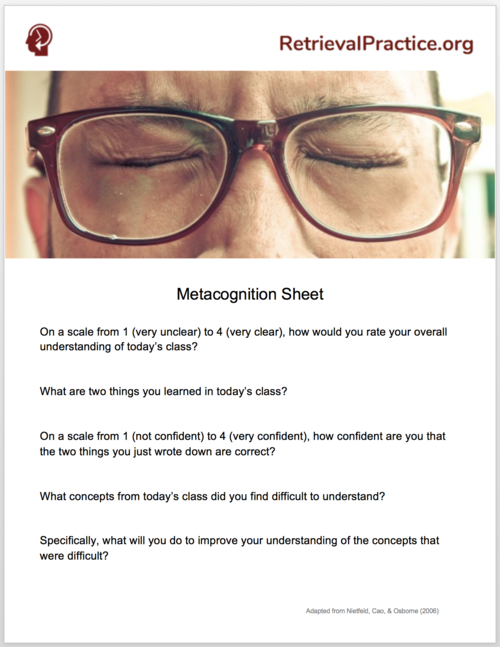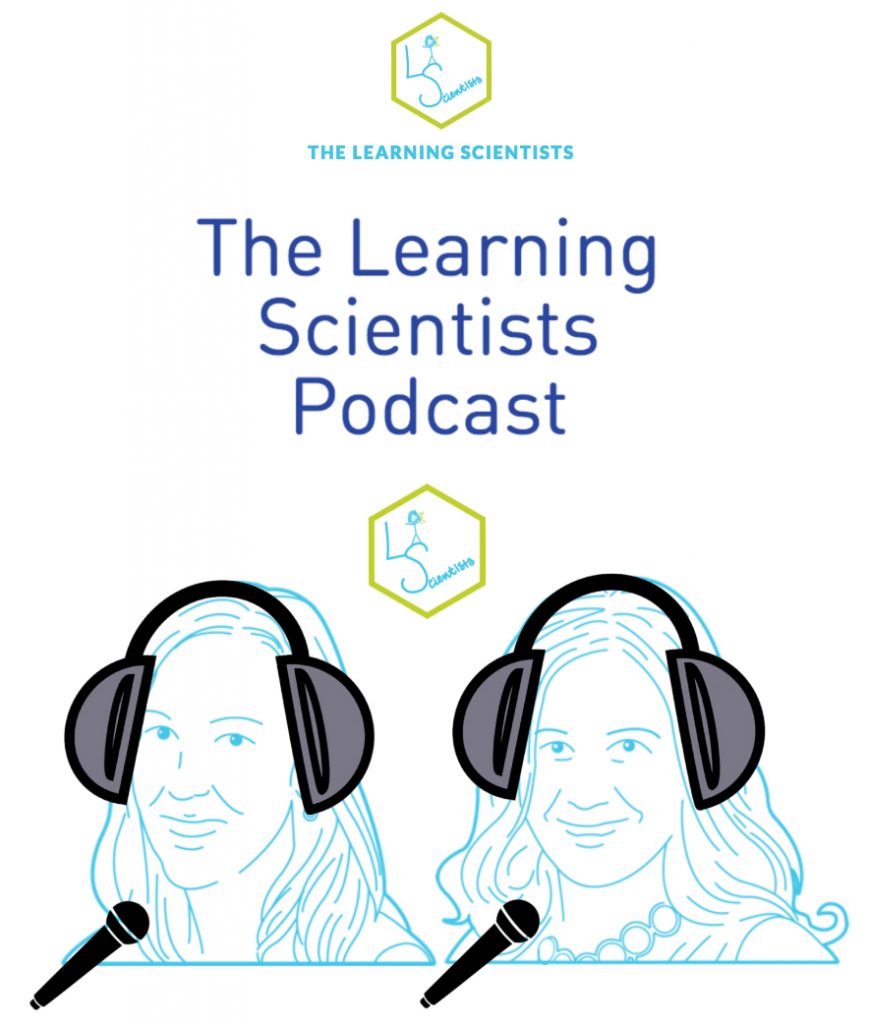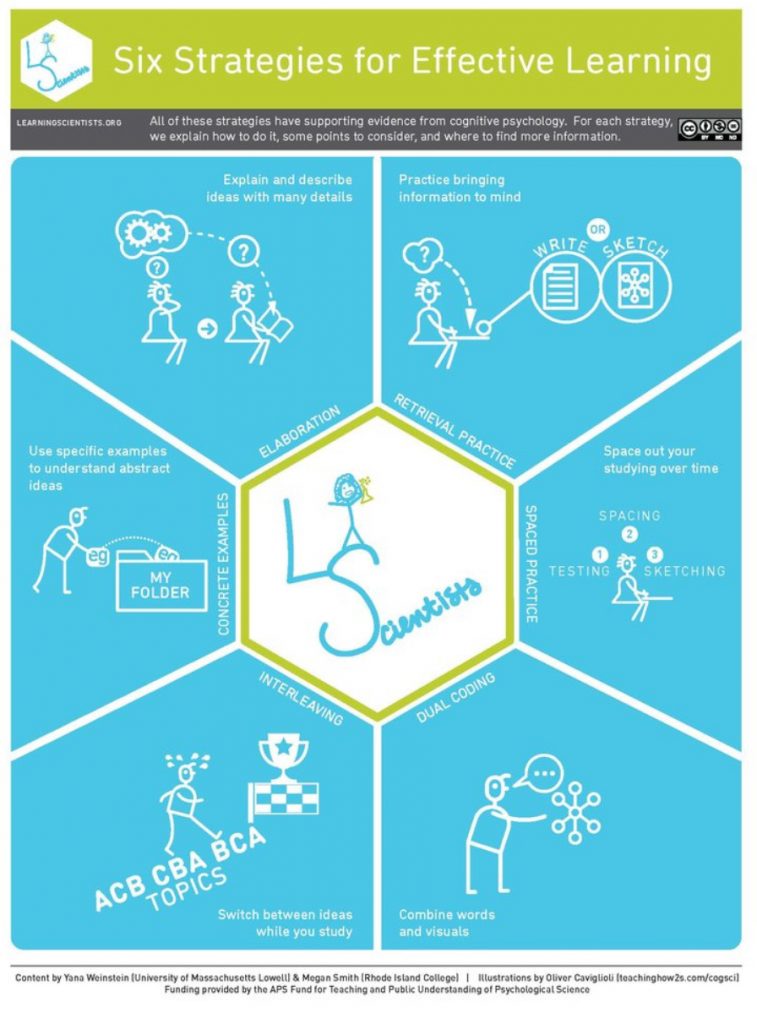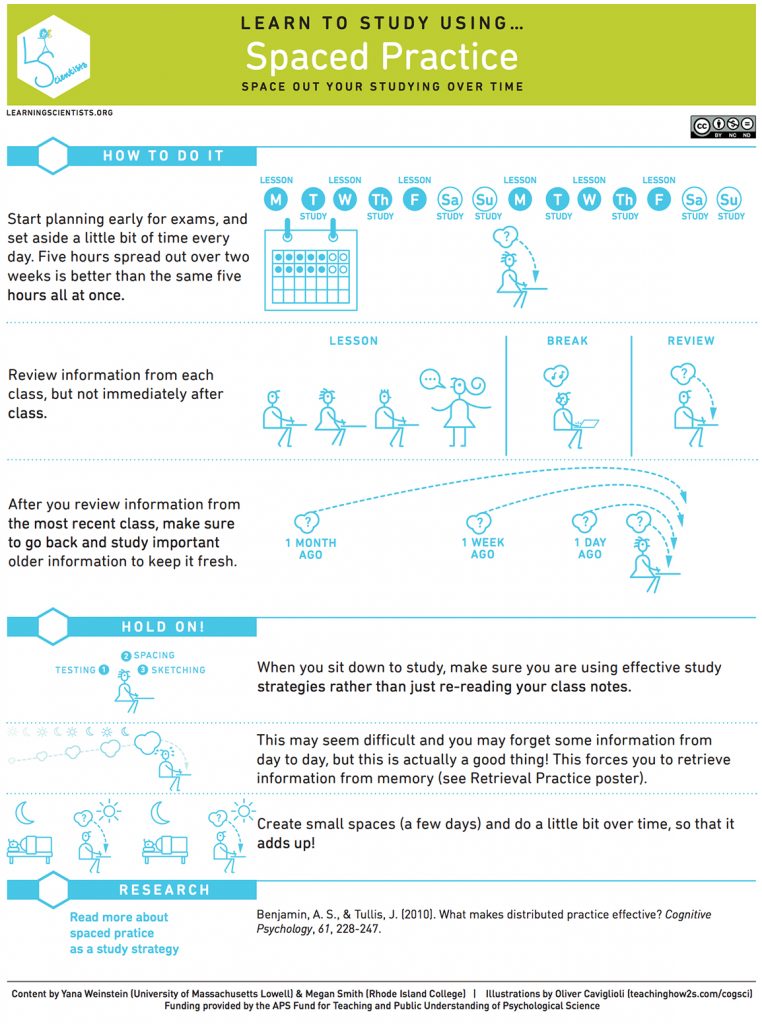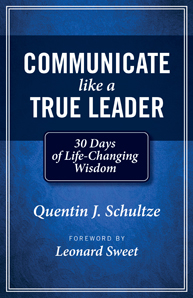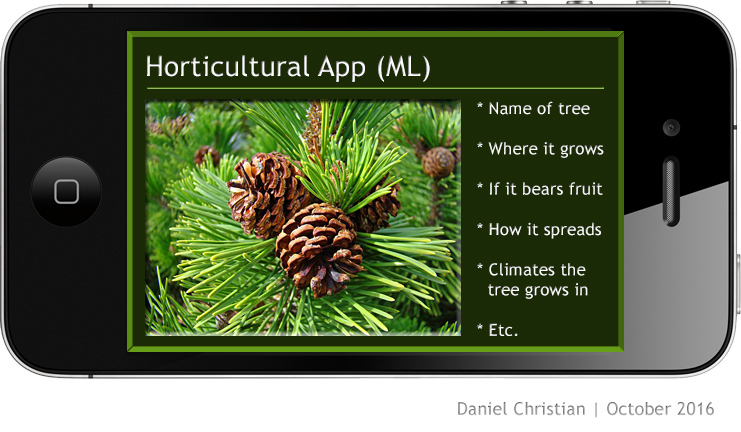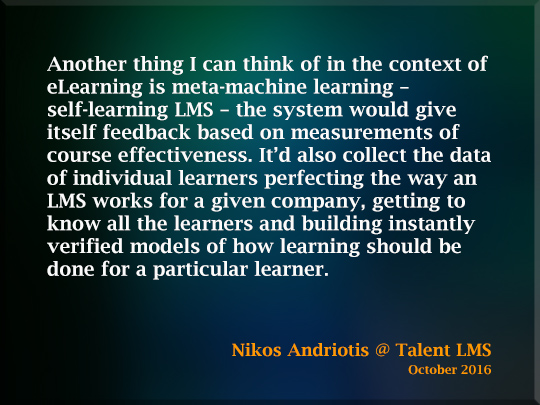From DSC:
With thanks going out to Nelson Miller, Associate Dean at WMU-Cooley Law School, a Professor of Law, and an author of many of his own books…below are some of my notes and reflections on the following article:
B. Teaching Metacognition in the Classroom
Because preparation and planning are vital to learning, law professors should set clear learning goals at the beginning of the semester and at the beginning of each unit and hand them out to the students, so that the students know what they are expected to learn in the class and to help them set their own goals for the class. (p. 14 of 61)
There are three criteria for creating goals (Insert from DC: i.e., learning objectives):
- “the terminal behavior, or what the learner must be able to do by the end of instruction,”
- “the conditions of demonstration, or the circumstances under which the learner must be able to perform the terminal behavior,” and
- “the standards or criteria, or how well the learner must be able to perform the objective for the instructor to conclude that the learner has met it.”
Goals for a doctrinal class should include substantive, skills (process), and professionalism goals
Teachers need to teach metacognitive skills explicitly. As one author has stated, “[i]f the knowledge is never shared through discussion, modeling, or explicit instruction, it is difficult for students to learn.” Moreover, being explicit about the learning process is a key to creating a learning self-identity. Knowledge of metacognitive strategies, such as those for memorization, studying, and reading, makes students more likely to use them, especially if they are told that such strategies will improve their performance and grades. (p. 15)
Professors should say out loud their thinking process when working sample problems “Modeling of strategies”–talking out loud about the steps the teacher uses when solving a particular problem–helps students develop metacognitive process skills (mental apps) by providing models. When students are given a problem to solve they generally focus on task completion, rather than the problem-solving process. Consequently, they will usually adopt a trial and error approach, rather than the process the teacher wants them to employ. Modeling of strategies helps solve this problem. Similarly, telling the students why the professor is employing a particular strategy helps conditional metacognition. After giving the demonstration, the professor should also ask questions that determine whether the students understood the processes for coming up with the answers (the problem-solving strategies). Teachers should also help students create strategies for solving ill-defined problems. In sum, the teacher should demonstrate a sample problem’s thinking process in detail, explain why the teacher used that process, have students do similar problems, then give student’s feedback on their problem-solving skills. (p. 18)
An example of scaffolding is partially filling out a diagram, then letting the students finish it (the partial outline approach). Another one is giving students leading questions before they read a case. (p. 19)
Professors should teach their students how to listen in class. Active listening aids learning, while passive listening often results in little retention. Students should think about what they are hearing in class. How does the material relate to my prior knowledge? What is important and what is less important? How can I use this material later? Where would I put this material in an outline? Students should also critically evaluate what the professor is saying. Do I agree? Is there an alternative argument? What are the implications of this argument? Similarly, professors should teach students effective note taking. (p. 20)
Law professors should also help students with study strategies. Deciding what items to study, how to allocate study time, and what study strategies to use are types of metacognitive control. (p. 22)
…
Professors should help students use study strategies that reinforce long-term memory and create connections between concepts, processes, declarative knowledge, etc. One way of doing this is through repetition,
…
Experts advise at least four repetitions of material each at least once within a day for retention.
Professors should help their students develop reading strategies. Engaged teachers help their students extract meaning and comprehension from cases, rather than just producing empty briefs. (p. 23)
E. Using Formative Assessment to Develop Metacognition
Well-designed formative assessments–assessments within the learning (during the semester)–that are related to course goals also aid in learning metacognition. This is because formative assessments force students to think about their thinking. As one scholar has asserted, “[a]ssessment methods and requirements probably have a greater influence on how and what students learn than any other single factor.” As one legal educator has noted, “[f]ormative assessment . . . is designed to provide feedback and guide students to improve and learn further, based on feedback that enhances their capacity to build on what they know and address areas of misunderstanding.” As a group of researchers have pointed out, “[i]f the assessments reflect the contexts in which the knowledge is to be used, this is nothing more than practice.”
Under the “testing effect,” “learning and memory for material is improved when time is spent taking a test on the material, versus spending the same amount of time restudying the material” because testing engages students in the subject matter. Also, testing uses retrieval, which as stated above, helps long-term retention. In addition, students retain more if they get feedback on their assessment because without feedback students don’t why they’ve made mistakes. Similarly, students who receive feedback are generally more engaged, more positive about law school, and spend more time studying than those who do not receive feedback. In addition, feedback about process is generally more useful than feedback about product. (p. 32)
There are many different kinds of formative assessments, including writing assignments, problem-solving exercises, multiple choice tests, observations, and [daily/weekly quizzes]. For instance, a professor could give the students a problem-solving exercise at the end of a unit to do at home, then go over that exercise in class. Likewise, the professor could give the students a take-home multiple choice test that could be graded by a teaching assistant. Similarly, the professor could give the students a complaint, a corporate document, or a lease and have the students find errors. Finally, the students could draft a contract clause after the unit concerning that clause. (p. 33)
The general criteria for designing effective formative assessments are:
- formulate learning objectives and performance standards; publicize them to the students
- design the assessment tool
- design instruction and activities to enable the students to learn what they need to fulfill the assessment task
- provide feedback/discussion — the teacher and student must discuss and use the results of the assessment measure to further promote learning and teaching
As one scholar has noted, “students learn more effectively when their teachers provide them with the criteria by which they are evaluated.” One way of doing this is through rubrics–“sets of detailed written criteria used to assess student performance.” (p.34)
“[R]ubrics are an attempt to break the grade down into a series of scores that pertain to various aspects of the assignment.” Rubrics identify how a student performed on a particular task, skill, or area. They include both characteristics and levels of quality. They can be a scoring rubric, an instructional rubric, or both. Rubrics should be related to the teacher’s goals for the class. They can employ grades, numbers, or categories.
“Successful students take charge of their own learning.”
From DSC:
My concern with this great article is that it’s a lot of valuable information to take in all at once — let alone try to act upon that information! I’ve only touched upon a subset of the items within that article. As such, it’s too much information for faculty members and instructional designers to remember and to act upon – as a whole.
This is why I’m such a fan of blogging and chunking valuable information up into much smaller pieces — then sending out such information piece by piece, where it’s much easier to digest and act upon.










